
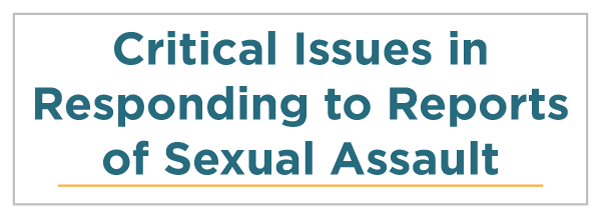 |
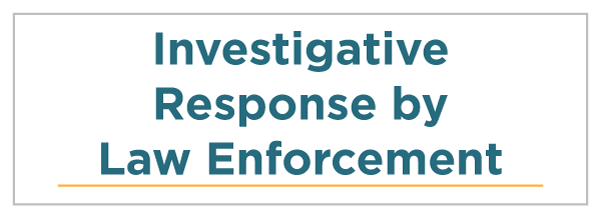 |
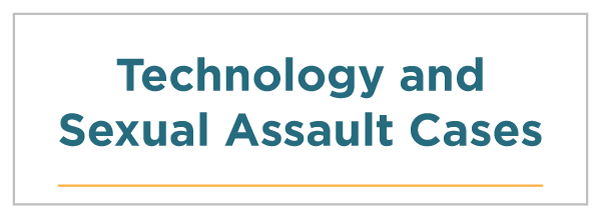 |
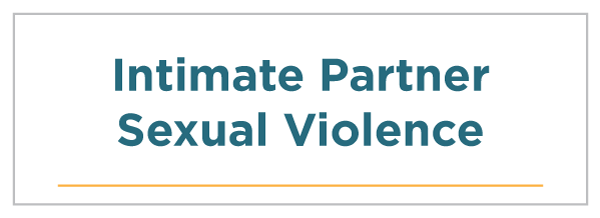 |
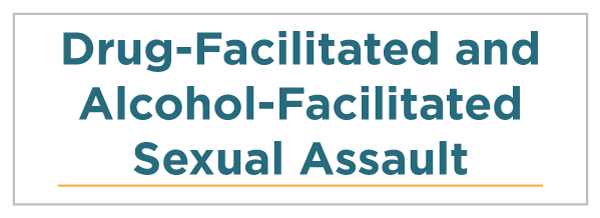 |
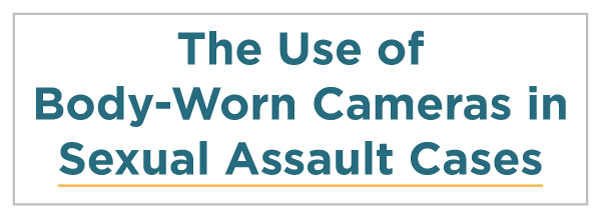 |
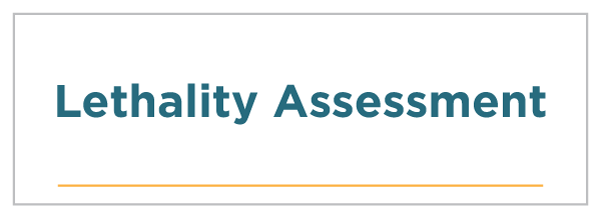 |
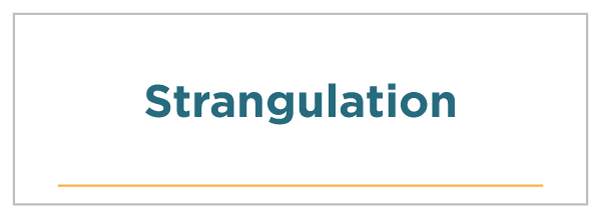 |
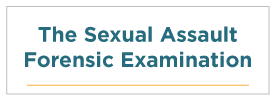 |
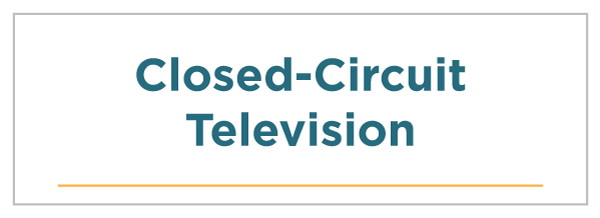 |
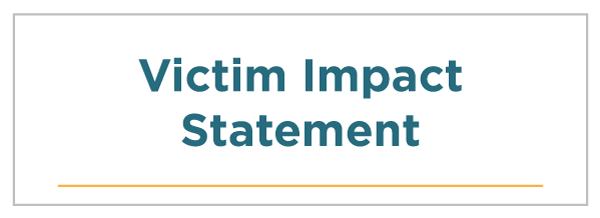 |
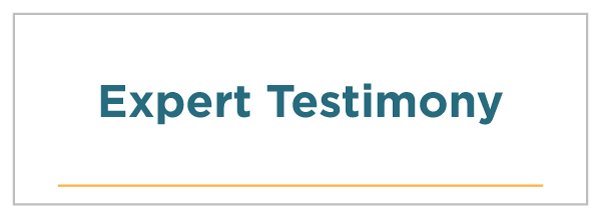 |
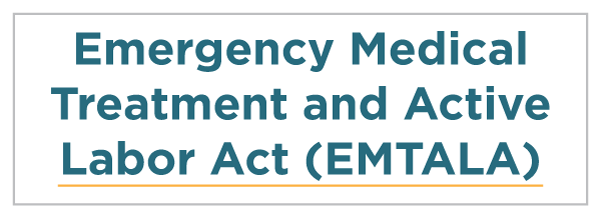 |
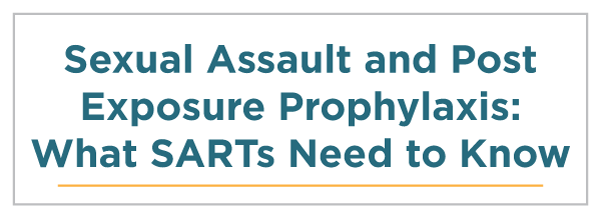 |
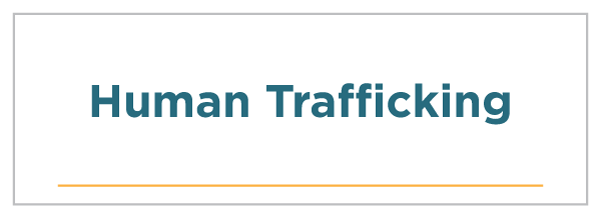 |
SARTs, and their respective members, can and do play a critical role in responding to human trafficking when faced with it in your community. Human trafficking is a crime that deprives victims of their most basic freedom: the right to determine their own lives, present and future. Human trafficking can occur anywhere, from the most remote corners of the globe, to urban and rural communities throughout the United States. Traffickers target vulnerable populations among women, men, and children, citizens and non-citizens, English speakers and non-English speakers, and people from all socioeconomic groups.
The impact of human trafficking is far reaching, for both victims and communities. Many victims experience direct violence in the form of physical and sexual assault, and the impact often includes short-term and long-term physical and psychological injury.
Trafficking — whether for sex or labor — often involves the types of crimes and violence SARTs are already familiar with, and in all likelihood, have already come into contact with. Often, service providers interact with trafficking victims and may not realize it without specific training.
Trafficking victims may visit emergency rooms for medical care, seek advocacy services for domestic violence, and interact with law enforcement or prosecutors as a victim of crime or, in some cases, because they were arrested. With the appropriate training, SARTs and their individual members have the opportunity at each of these points to identify a victim and help that individual connect with resources and support.
This section offers an overview of human trafficking, the role of SARTs in responding to trafficking, and guidance on developing local response efforts.
Human trafficking is a crime prohibited by both federal and state laws in the United States. It involves depriving a person of his or her liberty in order to exploit that person for labor, services, or the sex trade. The laws target the full scope of the crime, from initial recruitment to attempted or actual commercial exploitation of a victim.
It is important for SARTs to understand both local and federal laws related to trafficking in order to identify victims, provide appropriate care, and make appropriate investigation and charging decisions. Familiarity with laws will help SARTs better understand their local context, as well as what resources may exist to support their efforts through the stages of identification, intervention, investigation, and prosecution, and which avenues provide the most efficient pathway to those resources.
The Victims of Trafficking and Violence Protection Act of 2000 (TVPA) created the framework for the federal laws against human trafficking. Federal law uses the term “severe forms of trafficking in persons,” and includes both sex trafficking and labor trafficking: [199]
Other important human trafficking terminology includes —
SART members should be aware of important aspects of the law:
Trafficking can occur in any type of work, whether legal or illegal, in either the formal or informal [202] economy. Below is a list of some of the more commonly identified venues:
| Venues for Human Trafficking [203] | |
|
|
This list is not comprehensive. SART members can find more information on the types of work and different venues in the OVC Human Trafficking Task Force E-Guide section, “Forms of Human Trafficking.”
Just as there is no one venue for trafficking, perpetrators of this crime also vary. Traffickers can be foreign nationals or U.S. citizens, family members, partners, acquaintances, or strangers. People often incorrectly assume that all traffickers are males; however, several cases in the United States have revealed that women can also be traffickers. Traffickers can be pimps, gang members, diplomats, business owners, labor brokers, and farm, factory, and company owners. [204]
Many victims and traffickers share ethnic or cultural backgrounds. In these cases, traffickers are better able to understand, gain trust, and ultimately exploit victims. Traffickers choose targets based on vulnerability, and are able to use recruitment or enticement tactics and methods of control that will work most effectively. [205]
Tactics traffickers use to obtain and maintain control over a victim generally fall under the framework of force, fraud, or coercion. These terms stem from the federal statute that defines the crime, and include things such as physical and psychological force, isolation, threats, and emotional and psychological abuse.
There is no single profile of a trafficking victim. Anyone who is compelled through force, fraud, or coercion to perform any kind of work or commercial sex act by another person is a human trafficking victim. Victims come from all walks of life and are entrapped in many different settings. [206] Anyone can be a victim, regardless of race, color, national origin, disability, religion, age, gender, sexual orientation, gender identity, socioeconomic status, education level, or citizenship status.
Any person under the age of 18 who is engaged in commercial sex acts, regardless of the use of force, fraud, or coercion, is a victim of human trafficking, even if they appear to consent to the commercial sex act. [207]
One common trait all victims share is vulnerability. At its core, human trafficking is about the exploitation of vulnerability. Everyone has vulnerabilities, be they physical, economic, psychological, or emotional. Traffickers exploit these vulnerabilities — luring victims with promises of employment opportunities, relationships, and better lives.
Certain communities and populations may have a heightened vulnerability due to difficulties they face, including lack of accessible employment, poverty, homelessness, and discrimination based on factors including, but not limited to, race, gender, sexual orientation, age, or religion.
In the United States, some of the most vulnerable populations include runaway youth, homeless youth, foreign nationals, people with disabilities, people who identify as LGBTQ, and American Indian/Alaska Native communities. [208] SARTs should be aware of each of these populations, as well as other overlooked populations including male victims. SARTs can refer to the section on conducting a Community Needs Assessment to increase awareness of individuals or communities that are vulnerable to trafficking.
More extensive information on each population, including barriers to services and additional resources, can be found in sections of the SART Toolkit and Human Trafficking Task Force e-Guide sections:
Victims of both sex and labor trafficking may experience sexual assault. SARTs are thus well positioned to identify victims of sex or labor trafficking and provide important support, either directly or through referrals in the community. To prepare for and enhance their involvement, SARTs should seek additional information and training on the different types of trafficking and vulnerable populations. With this knowledge, team members will be able to better identify victims and provide the necessary support.
Recognizing key indicators of human trafficking is the first step in identifying victims and can help save a life. The locations and settings where trafficking occurs do not always appear suspicious. For instance, trafficking often occurs at places frequented by the public, such as restaurants or hotels.
While not exhaustive, below is a list of circumstances that, in combination, could indicate a potential trafficking situation and may warrant further inquiry.
| General Indicators of Human Trafficking [209] | |
|
|
| Social Indicators: Sex Trafficking | Social Indicators: Labor Trafficking |
|
|
SARTs should keep in mind the following points to help identify potential instances of trafficking:
The very nature of trafficking makes it difficult to identify victims. Traffickers are experts at controlling victims, including coaching victims about how to respond if someone asks about their situation. The coaching may be combined with threats to harm the victim’s family or friends if the victim does not comply with the trafficker’s rules or demands.
Traffickers also manipulate their victims into believing that they will be deported, arrested, or shamed if they leave, seek help, or tell the truth. As a result, individuals might not readily identify as a victim, and even the most earnest and sincere questioning may not result in a disclosure. In medical settings, victims may be afraid to tell the truth about an injury or their relationship to their trafficker, even if their trafficker leaves the room.
The following chart lists some common challenges that make identification and self-disclosure by victims difficult:
|
|
In addition to the challenges listed above, there are often systemic challenges. For example, fear of criminal prosecution, deportation, or placement in foster care, all potential systemic responses, may inhibit victims from coming forward. This creates a dilemma in which victims are isolated between two intimidating systems, both of which pose threats to themselves or their loved ones.
Mistrust also comes from first-hand negative experiences with systems and service providers. Examples include police treating self-disclosures as false reports, responders engaging in trafficking themselves, hospitals turning away patients perceived as problematic or unable to pay, or child protection workers taking children away. Furthermore, victims may come from communities or countries where government institutions are viewed with distrust because of discrimination, corruption, or political turmoil.
SARTs should seek training on screening for victims of trafficking, and consider incorporating procedures to support identification of trafficking victims into their existing efforts.
The purpose of a screening is to help uncover potential instances of human trafficking. The hidden nature of the crime, frequent misidentification of victims, and numerous barriers to victims self-reporting require professionals to look beneath the surface of any situation where they either suspect that an individual has been trafficked, or where the population they work with is known to be particularly vulnerable to exploitation and trafficking.
SART screening can be used to identify victims. SARTs already interact with and seek out those who may not be reporting. Accurate identification will allow SARTs to effectively address the needs of victims and provide them with assistance and support. Although victims of trafficking may have similar experiences and needs to other victims, their experiences are still unique.
Different rights and supports are available to different victims. Additionally, proper identification will enable better data collection, which can then better inform service development and prevention strategies.
A screening is not an interview or an investigation, but rather an opportunity to obtain enough basic information about the person’s circumstances to ensure safety and connection to appropriate services. In performing screenings and adapting procedures, SARTs should be mindful of issues related to privilege and confidentiality.
Below are additional important considerations and tips to keep in mind when performing a screening:
A service provider can ask potential victims these questions during a screening:
SARTs should also seek training that focuses on conversational screening, and review screening tools to ensure they include safe and appropriate language for diverse victims of sex trafficking and sexual assault. It is important to keep in mind that different screening tools will be appropriate for different situations. This training should also extend to any interpretation services incorporated into your SART response.
Service providers should also have protocols [210] in place that ensure providers speak with victims alone (unless there is a compelling reason otherwise), as the victim may be accompanied by someone who wants to maintain control of them. Team members should document the rationale for any and all deviation from protocols based on individual victim circumstances.
The needs of trafficking victims are as diverse as the victims themselves. SARTs should be aware of the range of needs from emergency to long-term, and prepared to meet these needs either directly or through partnership throughout disclosure, recovery, and prosecution.
Emergency needs should be attended to first, ensuring physical safety until the next meeting with the service provider. A more thorough needs assessment takes place over several meetings, allowing the victim to identify and prioritize their needs. This should include information gathering on the current status and emergency, and short-term and long-term needs for — [211]
|
|
A SART might play any number of roles when it comes to identifying and responding to human trafficking. In some localities, SARTs might be the foundation of a multidisciplinary team that responds to incidents of trafficking. In other areas, a SART might be one member of a larger trafficking task force. In some communities, many of the same members sit on both the SART and the trafficking task force. These communities tend to hold separate meetings, with separate agendas, sometimes scheduled back to back to ensure adequate focus on the particularities of the crime while preserving agency resources.
Regardless of a SARTs specific role, familiarity with collaboration and local resources can be of great benefit to the local response to trafficking.
Whether a SART is looking to create or participate as part of a multidisciplinary team response to trafficking, the following information provides some important considerations with respect to trafficking, and a starting point for developing guidelines that will help coordinate victims’ safety and services while also meeting criminal justice objectives:
Finally, SARTs should recognize that collaboration is essential. No one agency can respond to trafficking alone. For SARTs, this might mean engaging with new partners such as anti-trafficking agencies, emergency housing providers, substance abuse services, Police Narcotics Units, the DEA, the FBI, and Internet Crime Units.
For more information on developing partnerships, memorandum of understanding (MOUs), and procedures, see —
Department of Homeland Security Blue Campaign
The Blue Campaign is the unified voice for DHS efforts to combat human trafficking. Working in collaboration with law enforcement, government, non-governmental, and private organizations, the Blue Campaign strives to protect the basic right of freedom and to bring those who exploit human lives to justice.
National Criminal Justice Reference Service: Trafficking in Persons
This page links to publications, statistics, legislation, training opportunities, and other resources on sex trafficking.
Office for Victims of Crime: Human Trafficking
This page lists governmental, nongovernmental, and international resources and includes links to additional information on training and technical assistance.
The OVC Human Trafficking Task Force E-Guide
The E-Guide was designed to support task forces and other multidisciplinary teams in developing and enhancing their response to human trafficking. The resources it offers cover a wide scope, from basic knowledge to identification and screening, to more advanced information on investigations and prosecutions.
OVCTTAC — How We Can Help-Human Trafficking
This site provides technical support and training for advocates and SARTs.
U.S. Department of Health & Human Services, Office on Trafficking in Persons
The Office on Trafficking in Persons provides information on HHS programs to support victims of trafficking, and resources and materials for education, awareness, and training for health care providers, social service providers, and law enforcement officers.
Assisting Trafficking Victims: A Guide for Victim Advocates (PDF, 31 pages)
This technical assistance guide by NSVRC provides information about the prevalence of sexual assault throughout various forms of human trafficking.
Building Collaborative Responses to Trafficked Victims of Domestic Violence and Sexual Assault (PDF, 13 pages)
This guide by Futures Without Violence includes various resources based on topic, including legal advocacy, Native Americans, labor trafficking, survivors with disabilities, children and youth, and more.
Collaborating to Help Survivors of Trafficking: Emerging Issues and Practice Pointers (PDF, 52 pages)
This guide by the Family Violence Prevention Fund provides practical information for anyone working in a multidisciplinary setting.
Handbook on Direct Assistance for Victims of Trafficking (PDF, 356 pages)
This handbook by the International Organization for Migration (IOM) and Cooperazione Italiana Sviluppo Ministero degli Affari Esteri provides guidance on service delivery options from victims’ initial contacts to their social reintegration.
Map of OVC/BKA-Funded Human Trafficking Services and Task Forces
This map shows victim services and support offered across the country.
The National Human Trafficking Hotline
This organization provides resources about human trafficking as well as a hotline to report tips or request services.
National Human Trafficking Hotline at a Glance (PDF, 2 pages)
This fact sheet outlines the mission and services of the National Human Trafficking Hotline.
National Human Trafficking Referral Directory
SARTs can use this resource to connect with services near them.
This organization works to develop connections between survivors of trafficking and create a movement with survivors in the lead.
OVC-Funded Grantee Programs to Help Victims of Trafficking
This matrix provides specific information about programs funded to prevent trafficking and support victims.
This hotline is accessible through text and helps victims of human trafficking connect with local services.
Rescue and Restore Campaign Tool Kits
This page by the Office on Trafficking in Persons includes resources for health care providers, social service organizations, and law enforcement officers.
Wisconsin Human Trafficking Protocol & Resource Manual (PDF, 111 pages)
This protocol includes best practices for responding to human trafficking, such as using a victim-centered approach, understanding power and control dynamics, and identifying and assisting victims.
Identifying and Interacting with Victims of Human Trafficking (PDF, 2 pages)
This guide for law enforcement officers by HHS and Rescue and Restore Victims of Human Trafficking includes information about trafficking and tips on interacting with victims of trafficking.
National Survivor Network Members Survey: Impact of Criminal Arrest and Detention on Survivors of Human Trafficking (PDF, 12 pages)
This report by the National Survivor Network discusses findings of a survey on the impact of criminal arrest and detention on survivors of human trafficking.
Screening Tool for Victims of Human Trafficking (PDF, 2 pages)
This resource by the HHS and Rescue and Restore Victims of Human Trafficking contains sample questions law enforcement officers can ask to determine if someone is a victim of human trafficking.
Human Trafficking Screening Tool — Administration Guide (Microsoft Word, 18 pages)
This tool by the Florida Department of Children and Families is designed for child welfare and delinquency professionals to help them screen for youth victims of human trafficking.
Out of the Shadows: A Tool for the Identification of Victims of Human Trafficking
This publication from the Vera Institute of Justice includes tips on conducting interviews, ensuring confidentiality, and other considerations, in addition to the screening tool itself.
Health, Education, Advocacy, Linkage
This website provides information on trafficking for medical professionals.
Human Trafficking Assessment Tool for Medical Professionals (PDF, 1 page)
This resource by the National Human Trafficking Resource Center provides a flowchart for medical professionals to identify and assist victims of human trafficking.
Human Trafficking: Guidebook on Identification, Assessment and Response in a Health Care Setting (PDF, 56 pages)
This guide by the Massachusetts General Hospital Human Trafficking Initiative and the Massachusetts Medical Society Committee on Violence Intervention and Prevention defines human trafficking and its health effects and includes an assessment for individuals at risk of trafficking. It also discusses reporting to law enforcement and other legal issues.
Identifying Victims of Human Trafficking: What to Look for in a Healthcare Setting (PDF, 6 pages)
This resource by the National Human Trafficking Resource Center includes red flag indicators and assessments for victims of human trafficking.
Protocol Toolkit for Developing a Response to Victims of Human Trafficking in Health Care Settings
The Protocol Toolkit by the Health, Education, Advocacy, Linkage (HEAL) Trafficking provides recommendations for protocol development. It is available for free after filling out an online form.
US State Laws Address Human Trafficking – Education of and Mandatory Reporting by Health Care Providers and Other Professionals (PDF, 307 pages)
This guide discusses mandatory reporting for health care providers.
What You Need to Know: Sex Trafficking and Sexual Exploitation: A Training Tool for EMS Providers (PDF, 8 pages)
This training resource by Arizona State University (ASU) School of Social Work Office of Sex Trafficking Intervention Research focuses on EMS providers and provides tips for identifying victims of sex trafficking, as well as risk factors and sample questions to ask youth victims of trafficking.
Identification and Legal Advocacy for Trafficking Survivors (PDF, 55 pages)
Created by the New York Anti-Trafficking Network, this manual provides guidance to attorneys on issues that arise in the context of representing trafficking survivors. The manual is designed for practitioners who are familiar with basic legal terms and concepts, offering insight into the process.
The Legal Rights and Needs of Human Trafficking Victims in the United States (PDF, 2 pages)
This fact sheet from the OVC contains the legal rights and needs of victims of trafficking.
Meeting the Legal Needs of Human Trafficking Victims: An Introduction for Domestic Violence Attorneys & Advocates (PDF, 43 pages)
This guide by the American Bar Association provides an overview of the unique issues and remedies often present in human trafficking cases.
OVC E-Guide Legal Services Resource Page
This website offers resources related to legal needs, including guides and tools for attorneys; information on victims’ rights, civil litigation, and restitution; and information on immigration support for victims of trafficking.
The American Bar Association Survivor Retry Project can assist with legal concerns of victims of human trafficking.
How Not to Talk About Trafficking
This article by the Human Trafficking Center is a clear guide to avoiding some of the most common misunderstandings and misrepresentations.
Human Trafficking Domestic Violence and Trafficking Intersections (PDF, 2 pages)
This brief by the Polaris Project describes the intersection of trafficking and other forms of abuse.
Human Trafficking and Sexual Assault (PDF, 3 pages)
This resource by the Freedom Network covers the intersections of sexual assault and human trafficking, closing with recommendations on serving victims of both.
The Mindset of a Human Trafficking Victim (PDF, 1 page)
This resource by HHS and Rescue & Restore Victims of Human Trafficking offers recommendations for responding to trafficking victims and describes barriers law enforcement officers may face when encountering victims.
OVC “Faces of Human Trafficking”
This public awareness campaign is for outreach and education efforts of service providers, law enforcement, prosecutors, and others in the community. It includes a series of videos, discussion guides, four OVC fact sheets, and four posters that can be used to augment trainings and generate discussion. The information covers sex and labor trafficking, multidisciplinary approaches to serving victims of human trafficking, effective victim services, victims’ legal needs, and voices of survivors.
Take off the cape: Why using the word “rescue” is harmful to anti-trafficking efforts
This article by Becky Owens-Bullard of the Denver Anti-Trafficking Alliance (DATA) unpacks the reason practitioners should avoid using the term “rescue” when referring to anti-human trafficking efforts.
This article by Open Democracy discusses the images and language used on trafficking awareness materials and provides recommendations for awareness campaigns focused on trafficking.
Understanding the Organization Operation and Victimization-Process of Labor Trafficking in the United States (PDF, 307 pages)
The Urban Institute conducted a first-of-its-kind study on labor trafficking in the United States, including methods of control and experiences with abuse and violence suffered by victims of labor trafficking.
| Back | Index | Next |
